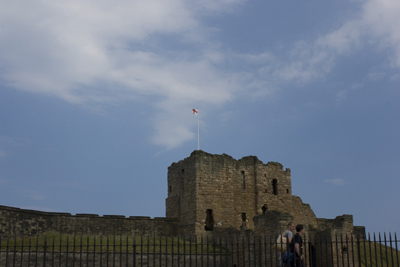Why Buy a DSLR?
Over the last 10 years camera have come on in leaps and bounds, first digital then more and more megapixels and now with consumer cameras which cost under £200 having more mega pixels than some professional DSLRs, alot of people are wondering why do you need to buy a professional DSLR if you get the same results with a consumer level camera.
Now there are many issues to consider when buying a camera and here are just a few of them
What is the camera going to be used for?
This one is simple to answer do you plan to use the camera for work or simply for fun. By work I mean take photos professionally, whether that be at weddings, portraits, events, PR, selling stock photographs or what ever.
If you plan to use the camera for work then you have to buy a larger DSLR rather than a smaller consumer camera, and although the photo quality will be better, the simple fact that someone is paying you to take photographs means you cant really turn up with a small camera.
Think of it this way in any professional work environment there are always the professional standard equipment, from kitchens to garages, hair salons to hotels, and photography is no different. You need to invest in your equipment in order to get the best out of your work.
MegaPixels
Now at first glance you may think that you can buy a consumer camera with the same amount of mega pixels as DSLR, and whilst on paper this is true in reality it is not, also as you go further up the professional DSLR ranges the amount of mega pixels far exceeds anything of a consumer level, such as Hasselblads having 31 mega pixels.
Ok getting slightly off point, so back to mega pixels. The thing to remember is that the number of mega pixels is not the only factor to making a good quality photograph, and although it does play a part in the size a photo can be printed at it is not the end of the story.
Think of it this way a truck has an engine size of around 10 litres with 800 bhp, whilst a car may only have a 2 litre engine with around 200 bhp, but which is faster? yes the car but it has less bhp and litres. This is the same rule that goes into photography, the whole camera makes the picture not just the amount or size of the sensor, component type and quality (including the sensor) all go into making the final photograph.
If you look at my post about Canon vs Nikon the sample shot on that post way taken with a 5 mega pixel camera, nothing by todays standard but it was a professional level DSLR, and I printed that shot at well over A1 size without any problems at all. How you may be asking yourself, simple all the components worked together to make the final photo a higher qaulity shot that I would get with a higher mega pixel consumer camera.
Also another issue with using mega pixels as a guide is that mega pixel is an indication of the size of the sensor, but not the amount of information it can hold, such as in a medium or large format camera.
Lenses
Firstly every single photographer on the planet knows that the most important thing in taking a good photograph is the glass (lens) you use, the better glass = better picture, after all everything in your photo is made up of light which has to go through the lens before getting to the camera sensor.
Whilst there are some consumer cameras with interchangable lenses, most have a lens that cant be changed, which means you are limited to the speed and focal length of the in built lens, not to mention the quality. This one factor alone is enough to warrant buying a DSLR the variety of lenses out there means everyone will be able to get something for the type of photography they do.
Whilst this choice is great it also allows the introduction of lenses of a more professional standard, such as Canon L series lens, you can also get lenses which are better in low light, known as faster lenses, you can buy longer range zoom lenses. Infact the world is your oyster and you are limited only by budget and your imagination.







